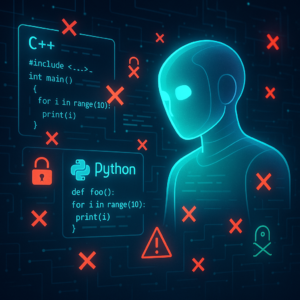Finally, Smarter Prompts: How IPGO is Upgrading AI Image Generation Without Extra Data

Finally, Smarter Prompts: How IPGO is Upgrading AI Image Generation Without Extra Data
Text-to-image AI is everywhere these days—whether you’re using DALL·E to generate cute animals in space helmets or asking Midjourney for your next profile pic, the tool you’re holding is powered by massive, complex models. But here’s the catch: while these tools are unbelievably powerful, they don’t always get it right. You type in your carefully worded prompt expecting magic, and instead get… something weird, off, or just plain ugly.
What gives?
That’s the question a group of researchers aimed to tackle with a super clever method called Indirect Prompt Gradient Optimization, or IPGO for short. Don’t worry—it sounds more intense than it is. Think of it as a way to make your prompts smarter without crafting the perfect sentence manually or retraining the entire model.
In this post, we’ll break down what IPGO does, why it’s a game-changer, and how it could eventually help you get better images from AI with less effort.
The Problem: Prompts Are Powerful but Hard to Perfect
Text-to-image models like Stable Diffusion and DALL·E rely on text prompts to generate images. But crafting the right prompt is tricky. Try it yourself: a prompt like “A futuristic city skyline at sunset” might render something beautiful—or a chaotic mess. Human preferences are nuanced, and AI doesn’t always get them.
Some researchers have tried to fix this by tweaking the models themselves, fine-tuning them with tons of examples. Others use reinforcement learning to nudge models into preferred behavior. But these approaches are often slow and require lots of expensive computation.
Wouldn’t it be better if we could just optimize the prompts instead?
Enter IPGO.
What Is IPGO, Really?
IPGO is all about improving the prompts—not by changing the words, but by updating how those prompts are understood by the AI model.
Let’s break this down.
The Basics
When you type a sentence into a model like Stable Diffusion, it doesn’t “read” that sentence as humans do. It converts your prompt into a bunch of numbers (called embeddings) that carry the meaning into the image generation system.
Normally, these embeddings are fixed. But what if we could insert tiny, adjustable “helper tokens” into that embedding to fine-tune it?
That’s exactly what IPGO does. It adds learnable tokens at the beginning and end of the prompt embedding—sort of like prefixing and suffixing a sentence with a little secret sauce. These tokens are continuously tunable, which means they can be updated using gradients (hence the “gradient optimization” part).
So instead of trial-and-error wording or retraining massive models, IPGO simply adjusts how the prompt is presented under the hood—no need to touch the core model.
Pretty smart, right?
How IPGO Works: Under the Hood (But Not Too Deep)
Okay, we promised not to get too technical, but if you’re curious about how this all functions, here’s an accessible metaphor:
Imagine you’re seasoning a dish. The base recipe (your raw prompt) is great, but you want it to taste just right. Instead of re-cooking the dish (fine-tuning the model), you add a squeeze of lemon at the beginning and a pinch of herbs at the end (prefix and suffix tokens). You adjust these additions based on a taste-tester’s feedback (the reward model) without changing the original ingredients.
That’s what IPGO does to your prompt—it puts learnable flavor on both ends of the prompt’s internal representation, then uses gradient feedback to make that flavor better bit by bit.
But How Does It Know What’s “Better”?
IPGO learns to adjust itself using external reward models—these basically simulate human judgment by scoring an image based on:
- 🎨 Aesthetics – Is the image beautiful?
- 🤝 Human Preference – Is this the kind of image people tend to prefer?
- 📄 Text-Image Alignment – Does the image actually match the prompt?
Using these scores, IPGO tweaks the prefix and suffix tokens to maximize the desired quality. And here’s the best part: it does this without changing the image generator itself.
Why IPGO Matters: Fewer Resources, Better Results
One of the biggest turn-offs to customizing AI tools is the sheer amount of data and compute power you need. Reinforcement learning techniques and model fine-tuning can cost thousands of dollars in GPU time.
IPGO is refreshingly lightweight.
It runs on a single GPU and can achieve high-quality results using very little training data. This makes it accessible to regular researchers and hobbyists—not just Big Tech.
Head-to-Head With the Competition
The researchers behind IPGO tested it against several popular methods:
- DRaFT and DDPO: Full-on training approaches.
- Promptist and DPO-Diffusion: Training-free prompt optimization tools.
- ChatGPT-4o: Yep, even letting GPT-4o rephrase your prompts.
So how did IPGO fare?
Across three datasets (COCO, DiffusionDB, and Pick-a-Pic), and across three goals (aesthetics, alignment, and human preference), IPGO performed better in 98% of the test scenarios. On average, it improved reward scores by about 4%, which is a big deal in this space.
But numbers aside, it wasn’t just about higher scores: the images generated by IPGO-prescribed prompts simply looked better—more vivid, more relevant, more human-like.
Batch Learning and Generalization
One neat feature of IPGO is that it can optimize over batches of prompts. This means it can learn common prompt enhancements across multiple examples—finding generalizable “prompt wisdom” that works across images.
Even cooler? These learned enhancements can transfer to completely new prompts. In the researchers’ experiments, token tweaks learned from human scenes helped style animal images—even though the animals were never part of training.
In creative workflows where speed and consistency matter (think: marketing teams, social media planning, or content generation tools), this could be a huge productivity boost.
Limitations and Fine Print
IPGO is awesome, but not perfect.
It’s especially strong in making images prettier ( aesthetics ) and more liked by humans ( preference ), but not always as precise when it comes to perfect text-image alignment. In other words, it may prioritize beauty and appeal over semantic literalism.
Also, multi-prompt training works best when the prompts are somewhat similar. If you’re feeding it a “kitchen in Tokyo” and a “spaceship in Saturn,” it might struggle to find a shared optimization strategy. Homogeneous batches yield better results.
Finally, for ultra-rich CLIP alignment (semantic accuracy), training with individual prompts still seems to be the way to go—for now.
Why This Matters for You (Yes, You!)
If you’re a creator, developer, or just someone who enjoys playing around with AI image generation, this is where the rubber meets the road.
Imagine plugging in your prompt like normal, but the system behind the scenes auto-optimizes it to get you the image you actually want—no extra tinkering, no weird phrasing tricks.
This could be baked into future image generation tools, helping everyone from artists to advertisers get better results with less work.
And since IPGO doesn’t need a high-end setup, we might start to see this kind of intelligent prompt optimization show up in more consumer-facing tools or creative platforms.
Want better AI-generated art? IPGO says: you don’t need more words—just smarter ones (even if you never see them).
Key Takeaways
-
Prompting is powerful but often imprecise. Even top-tier generative models can misinterpret text prompts or create subpar images.
-
IPGO optimizes prompts without editing the prompt directly. Instead, it adds learnable tokens to the beginning/end of the prompt’s internals during processing.
-
It’s guided by real-world goals. Using models that represent aesthetics, human preference, and alignment, IPGO makes small adjustments for maximum effect.
-
No extra data? No problem. IPGO works on a single GPU and doesn’t require retraining your diffusion model. Efficiency is a major strength.
-
It beats the competition. In 147 benchmarked scenarios, IPGO came out on top in 98% of them—outperforming common methods like DRaFT, Promptist, and even GPT-4-o rewording.
-
It learns and generalizes. Learned prompt tricks from one domain can improve image generation in another.
-
It’s not magic, but close. While IPGO excels at enhancing visual appeal and user preference, pure semantic alignment may require fine-tuning per prompt.
In a world where prompt phrasing can make or break your AI-generated results, IPGO makes a compelling case for smarter, data-efficient tuning. Whether you’re building a next-gen image editor or just want to spice up your AI art, this research brings us one step closer to image generation that truly understands us.
Want to dive deeper? The code is open-sourced at GitHub. Let your prompts soar! 🚀
If you are looking to improve your prompting skills and haven’t already, check out our free Advanced Prompt Engineering course.
This blog post is based on the research article “IPGO: Indirect Prompt Gradient Optimization on Text-to-Image Generative Models with High Data Efficiency” by Authors: Jianping Ye, Michel Wedel, Kunpeng Zhang. You can find the original article here.




